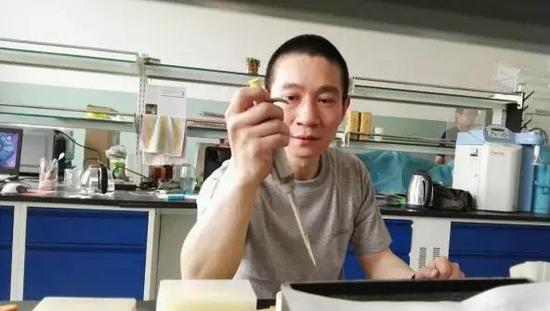Questioning is getting worse: Why can't Han Chunyu's NgAgo experiment be replicated?
On May 2, 2016, researchers from Hebei University of Science and Technology and Zhejiang University School of Medicine published a paper entitled "DNA-guided genome editing using the Natronobacteriumgregoryi Argonaute" in the journal Nature Biotechnology (hereafter referred to as "NBT") (below) Abbreviated as "NBT thesis"). The paper introduces a new genome editing technique that uses Argonaute (hereinafter abbreviated as "NgAgo") of Natronobacterium gregoryi to perform DNA-guided genome editing. Participating in this research is the team of Associate Professor Han Chunyu from Hebei University of Science and Technology.
Related reading: Han Chunyu exclusive response to the dispute: Why can't the NgAgo experiment be copied?
Gene editing is a technique for precise modification of the genome, including gene site-directed mutagenesis, gene-spotting and deletion, simultaneous mutation of two sites, and deletion of small fragments. The current mainstream is based on CRISPR/Cas9-based gene editing technology, but its main limitations are off-target effects and limitations of PAM recognition sequences. The NgAgo gene editing technology proposed by NBT paper is based on the DNA-guided genome editing tool. It overcomes some limitations of CRISPR gene editing technology and is considered to be “a new technology for genome editing instead of Cas9â€. Great response and close attention. Many scientists immediately use this technology to carry out experimental research, hoping to quickly use this new technology to obtain applications in the field and make exciting progress.

At the same time, the publication of the paper has been widely and widely reported and paid attention to by many domestic and international media. The coverage covers the introduction of the content of the paper itself to the author team, especially the introduction of Han Chunyu's own academic qualifications, academic and even family background. For example, the WeChat public number “intellectuals†made detailed reports on “the world's first-class new technology by Chinese scientists who made a blockbusterâ€, which triggered a heated discussion in the scientific research community; and the media called it “Nobel Prize†technology. Due to the particularity of his identity and status, Han Chunyu completed a very promising scientific research result in an unknown university with relatively backward experimental equipment. Under the current background of “mass entrepreneurship and innovationâ€, the plot of “small people†who challenged traditional thinking has attracted many media to report.
However, in the past few months (from the NBT paper published on May 2, 2016 to August 16th), with the advancement and verification of experiments by scientists in related fields around the world, the doubts from peers have become stronger and stronger. For example, Fang Zhouzi publicly questioned the authenticity of the results of Han Chunyu's paper on his Twitter. Other researchers in the country claimed that they could not completely repeat the results of the paper, which triggered the media's more attention and coverage of Han Chunyu, and even led to the report. Topics such as the scientific ethics of challenging integrity have aroused heated discussion among a wider range of Internet users. In view of the rapid spread and widespread coverage of technology-related hotspots in the entire media (especially the new media), as well as the public's widespread attention and relay dissemination of related events through mass media and social software, this is a hotspot event for Han Chunyu. From the perspective of the whole media, we will discuss and analyze its grievances, hoping to provide readers with comprehensive information and materials, and provide a detailed reference for relevant science and technology management departments and policy makers.
YT-H706
YT-H706
Shenzhen Sunshine Technology Co.,Ltd , https://www.szyatwin.com